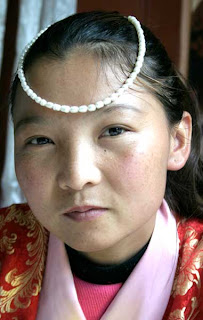Monday, June 11, 2012
Kimchi and more
Wednesday, February 8, 2012
Beware Indian Figs
Friday, November 25, 2011
Another thyme, please!
Have you discovered a new herb or spice recently? Please tell us about it.
Wednesday, November 2, 2011
When Alice meets Adrià
“Eat this one first,” says Vicky, introducing herself as a ‘guide’ (not waitress) for our meal at Ritual Restaurant in Nelson Bay, north of Newcastle. She’s not wearing a headband, but there’s a definite Wonderland feel about her comment.
Please tell us, what is the most unusual place you have dined at?
Friday, September 23, 2011
Toffee Potatoes
I have waited until now – just in case you thought this blog was going to be all about toffee – to mention another savoury toffee dish I have encountered on my travels.
Tuesday, April 12, 2011
Oui, oui! Rabbit. NOT!
Sunday, January 2, 2011
Squeamish Ominvore

Once, long ago, I was a vegetarian. Now I define myself simply as a ‘squeamish omnivore’.
To explain – I have never seen the Sardinian cheese meant to be consumed maggots and all, and I don’t know how I would fare with that. But washed rind cheese is fine with me, and while we are onto smelly food, so is durian that love-it hate-it fruit of south east Asia, every bit as ugly to look at as some people say it tastes.
There are some things, though, that I’ll be happy if I don’t ever eat again. Witchetty grub comes right up there at the top of the list. Vic Cherikoff is an Australian bush food expert and he was at a food event many years ago, which I also attended. He was determined I should try witchetty grub. These are fat white grubs a few centimetres long, which live underground and are actually moth larvae. I grew up in Western Australia knowing them as bardi grubs. Either way I had no desire to eat one, even though indigenous people regard them as a delicacy.
Vic was adamant I should taste a grilled grub and I gave in when my generally honest husband, assured me he had already downed one. I have to say the taste was not so bad – buttery (some say they are like peanut butter) and not unpleasant – but it was the texture that got to me. Because it had been grilled, the skin was tough and rubbery and I could not chew it and had no option but to swallow it down pretty well whole. It was only after we left the event that my partner admitted he had disposed of his witchetty grub in a convenient nearby potted palm!
Chicken’s feet in China, or in any dim sum restaurant for that matter, need never be on my plate again either. Nor sea cucumber which I once ate (no, I didn’t – it was like chewing an eraser so I spat it out) at a Vietnamese wedding, and water rat (in France – that story coming up soon) or raw crab in Seoul. Even my Korean guide shuddered at the idea of eating that.

In China I have been served pigeon (or some entire small bird, with its head hanging over the edge of the bowl) and camel, alligator, caribou, snails and frog’s legs in other countries.

Then there is what I call shudder-territory. I hope I am never in the position of being expected to eat any of these creatures – or parts of them: crickets, bugs, snakes, centipedes, dog, cockscombs, bull’s ‘bits’, lark’s tongues, silk worms, duck webs, white veal (aka the unborn foetus), partially developed chickens still in the shell, puff balls, eyeballs, snake blood or fallopian tubes!
There’s a lot to make you think twice in this omnivorous world. So, how about a nice drink to calm our nerves?
But not tequila, please. I hear there are worms in that!


























